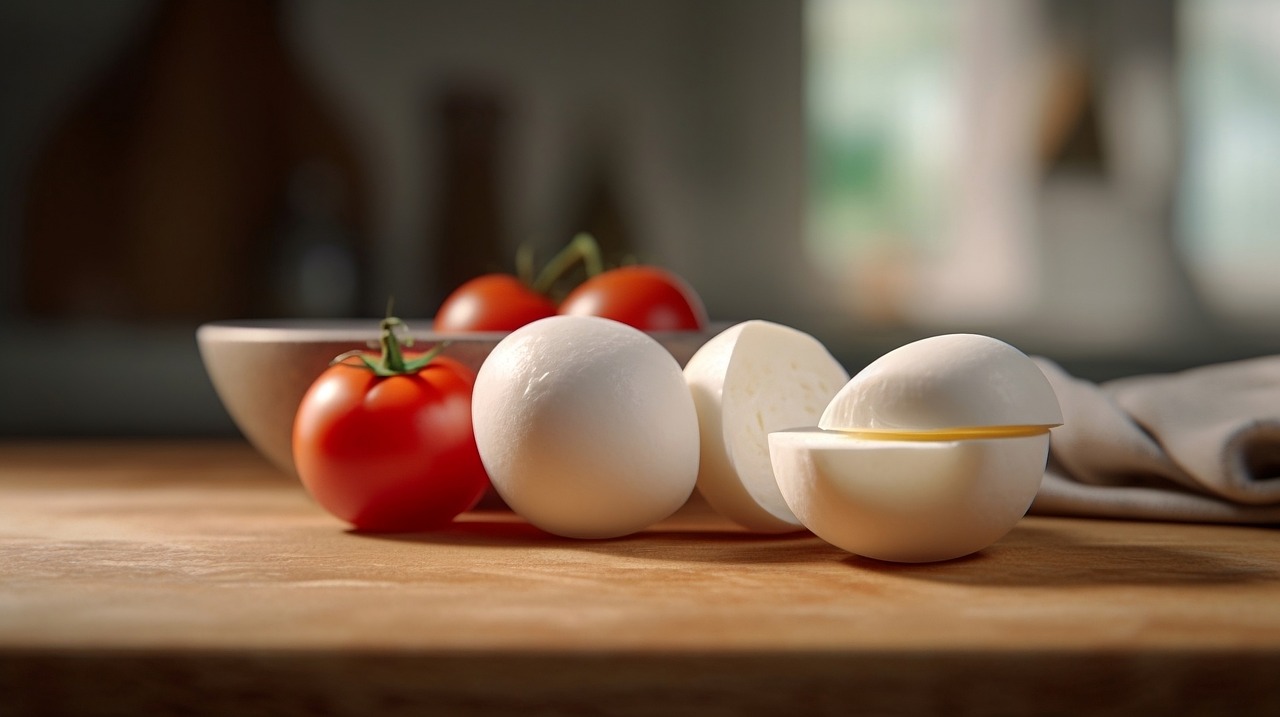30-minute Mozzarella

30-minute Mozzarella
Our recipe, adapted from Rikki Carroll's recipe.
Prep Time 20 minutes mins
Cook Time 20 minutes mins
Course Side Dish
Cuisine Italian
Servings 2 lbs
Equipment
- Liquid thermometer
- Cheesecloth-lined colander
- Non-reactive pot stainless steel, ceramic, glass
Ingredients
- 1 gal whole milk raw, if you can get it; not ultra pasteurized
- 1 tsp citric acid dissolved in ½ c water
- ¼ tablet rennet dissolved in ¼ c water (OR ¼ tsp liquid rennet)
- Un-iodized salt sea salt, kosher
Instructions
- Pour dissolved citric acid into a large, non-reactive pot. Add milk; some curdling will take place. Place pot in sink and fill sink with very hot water. Stir the milk until it reaches 90 degrees Fahrenheit.
- Add diluted rennet to milk and stir up and down for 30 seconds. Let stand for 5 minutes. A soft curd should have formed. (If the curd seems too soft, let stand another 3 to 5 minutes.)
- Use a soft knife to cut curd into 1-inch cubes, forming a grid. Let rest for 2 to 3 minutes. While you are waiting, drain water from sink and add new water (at a temperature of 115 to 120 degrees).
- Set colander over a bowl to catch the whey. Using a slotted spoon, scoop curds into colander and allow to drain.
- When curds have drained, pour whey back into the pot. Rest colander in the pot - the whey will keep the curds warm. Add salt to taste.
- Fold curds over themselves several times to release more whey. *Note: the more you work the curd at this point, the dryer the resulting mozzarella.
- If you’re starting with pre-made curd, jump in at this stage.
(Stretching instructions courtesy of Caputo Brothers Creamery.)
- Heat a pot of water to 190 degrees Fahrenheit. While your water is heating, cut or break up your curd into quarter-sized pieces. Heap the sliced curds in the center of a non-reactive bowl. Salt heavily, and allow to stand for several minutes.
- Pour just enough water over the curds to cover. Do not stir! Let your curds rest for a few minutes.
- Using a wooden spoon, begin to gently push the curds together toward the far side of the bowl, checking to see if your curds have begun to stretch.
- Gently insert your spoon into the bowl, under the curds. Using your other hand, hold the curd to the back of the spoon, as you lift the spoon, allowing the curd to stretch under its own weight. Do this two or three times, until most of the lumps and bumps have melted.
- Deposit your curd back into the water and set your spoon aside. Using both hands, pick up your curd and gently fold the cheese under itself (similar to folding a pair of socks), forming a baguette shape.
- Take one end of the baguette out of the water, letting the other end stay warm. Roll the exposed end under, gently making a mass. Rest that mass between your thumb and first finger. Make a C shape with the opposite hand. Push the mass into the C and let go. After you let go, close the C to the tightest fist you can. You’ll feel the cheese start to break. Hook one finger underneath the ball of cheese, and gently pull it free from the mass, and into the palm of your hand.
- Transfer the cheese into a bowl of cool water to firm. Refrigerate for up to 3 days.
Keyword class recipe
Stay Connected
Sign up for e-news to learn about special events and offerings.